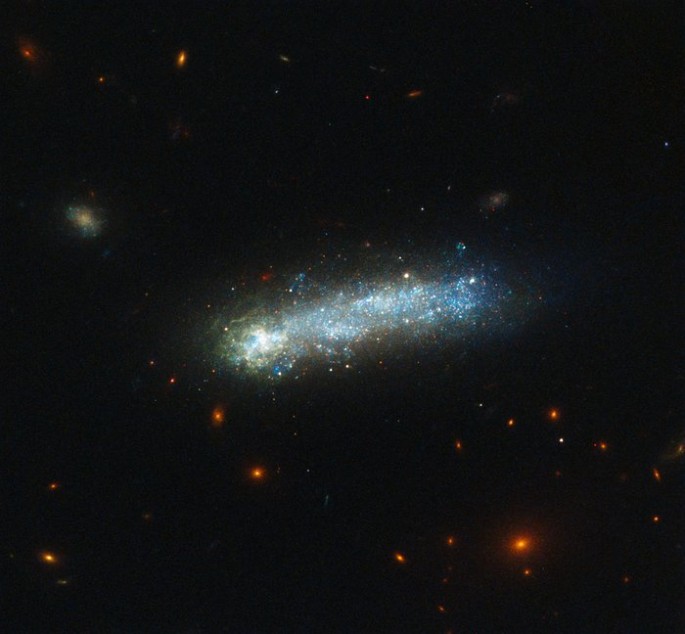New images taken by the Hubble Space Telescope reveal the elusive and extremely rare tadpole galaxies that are even more limited in the Milky Way galaxy.
These new images of the tadpole galaxy known as LEDA 36252 or Kiso 5639 can provide a better understanding of these unique stellar formations as astronomers suggest that many of the stars in the galaxy are still forming in this tadpole galaxy which is drifting across a region in the universe almost devoid of gases, revealing a slow formation.
Astronomers say that about 10 percent of the galaxies inside the universe are considered as tadpoles, possessing a similar shape to these baby amphibians, with globular, spinning shapes. There are only a few detected that are close to the Milky Way, where LEDA 36252 is estimated to be 82 million light years away.
Stars are continuously forming inside LEDA 36252 even if it is considered as a truly ancient galaxy, as astronomers study this galaxy to learn more about cosmic gas accretions and starburst activity, including how globular star clusters form.
The head of the tadpole galaxy apparently contains a high concentration of young, hot stars that is estimated to be around 10,000 solar masses.
According to astronomer Bruce Elmegreen from the IBM's Thomas J. Watson Research Center, there is more than just star formation occurring within a tiny galaxy and in this new study, results suggest that this star formation is caused by continuous accretion of gas consisting of less heavy elements onto a part of this dormant dwarf galaxy.
According to lead author of the study, astronomer Debra Elmegreen from Vassar College, New York, these galaxies rotate as LEDA 36252 spins continuously, as another region of the galaxy receives an infusion of new gas from this filament, triggering another round of star birth.
The tadpole head of this galaxy is estimated to be 2,700 light years across with dozens of star clusters, that are estimated to be at an average age of less than 1 million years old. Its mass is about three to six times bigger than the other stars in the galaxy, where stars are forming at different rates. Astronomers believe that some star clusters are about 7 million to more than a billion years old.
This new study is published in The Astrophysical Journal.



























